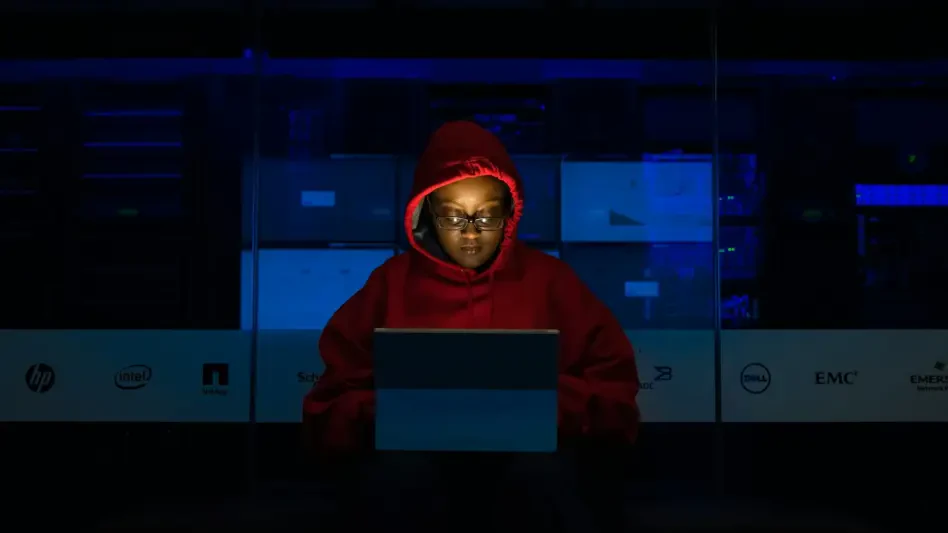Scattered Spider represents a new breed of cybercriminals whose skillful manipulation of technological and human vulnerabilities has profound implications for cybersecurity. Their multifaceted approach to cybercrime, characterized by advanced social engineering techniques, SIM swapping, and the procurement of legitimate tools for nefarious operations, poses a formidable challenge to traditional defensive measures. With a reputation bolstered by high-profile incidents, they highlight the growing trend of threat actors exploiting Ransomware-as-a-Service (RaaS) to conduct scalable, less technically demanding attacks. The evolution of Scattered Spider’s strategies serves as a bellwether for cybersecurity practitioners, revealing the increasing sophistication with which these groups adapt to evade detection and asset capture. Their methods necessitate a reevaluation of current defensive practices and the exploration of innovative solutions to counteract these emerging tactics.
Unraveling Advanced Techniques
Scattered Spider’s reliance on social engineering as a primary attack vector is illustrative of their calculated methodology. Traditionally, social engineering has sought to manipulate individuals into divulging confidential information, but this group elevates the practice by employing a range of techniques across diverse platforms. From impersonating staff members through phone calls and SMS to exploiting messaging applications like Telegram, they subvert the human factor in cybersecurity defenses. However, what sets their operations apart is the use of multi-factor authentication (MFA) fatigue, where victims are overwhelmed by repeated MFA requests, eventually granting access out of frustration. Such nuances in their approach underscore the need for organizations to reinforce cyber awareness training and foster a culture of vigilance among employees.
Another cornerstone of Scattered Spider’s operations is SIM swapping, emphasizing their broad skill set in hijacking telecommunication systems. This technique involves transferring a target’s phone number to a new SIM card without consent, intercepting two-factor authentication codes, and gaining access to privileged systems. The implication is clear: the traditional reliance on SMS-based authorizations as a security measure is increasingly vulnerable. Organizations are encouraged to shift toward more secure authentication factors, such as biometric verifications or app-based notifications, integrating these countermeasures within a multi-layered security framework.
Leveraging Legitimate Tools and Living-Off-the-Land
Scattered Spider’s ingenuity is further evident in their adept use of legitimate system tools and applications, exploiting them for reconnaissance, lateral movement, and command-and-control communications. By incorporating widely-used software like Mimikatz for credential extraction, Ngrok for secure tunneling, TeamViewer for remote control access, and more recently, Teleport for seamless network transitions, they effectively avoid detection by traditional antivirus programs. This deviation from overtly malicious software to a more covert strategy, known as Living-Off-the-Land (LOTL), highlights the complexity of distinguishing between legitimate and harmful activities. It urges security experts to deploy advanced analytics and behavior-based detection mechanisms to discern unusual patterns that may indicate malicious intent.
Another tactic in their arsenal involves Bring Your Own Vulnerable Driver (BYOVD), a method where attackers exploit known vulnerabilities within drivers to subvert Endpoint Detection and Response (EDR) systems. This strategy is rather ingenious: by using compromised drivers, they bypass operating system security measures, predominantly on Windows devices. The challenge for defenders is twofold: staying abreast of reported vulnerabilities and ensuring timely patch implementations, which requires proactive vulnerability management and ongoing system health checks to address and remediate potential weaknesses before they are exploited.
Noteworthy Incidents and Impact
Scattered Spider’s operations have left a trail of impactful incidents that underline their threat to cybersecurity across sectors. A major instance was the SMS phishing campaign against Twilio in 2022, a tactical assault on cloud communication infrastructure that resulted in compromised employee accounts and unauthorized entry into the company’s internal systems. The brazen attack signaled to industries the critical importance of strengthening defenses against targeted phishing, especially within organizations that hold substantial data reservoirs.
Further cementing their notoriety, Scattered Spider also targeted MailChimp, infiltrating employee accounts to breach specific entities in the cryptocurrency and finance sectors, illustrating the intersection of cybercrime with financial theft. Notably, their foray into the gaming arena saw them steal game source codes from Riot Games in 2023, employing social engineering to breach security networks. The breach’s fallout demonstrated the potential for significant financial and reputational harm when attackers leverage exclusive digital assets for illicit gain.
The group’s maneuvering within the casino industry, notably against Caesars and MGM also in 2023, highlighted their capacity for large-scale data theft, with reports of nearly six terabytes of sensitive information being extracted using the BlackCat RaaS strain. Most recently, in 2025, Scattered Spider’s capabilities extended to infiltrating Marks & Spencer, linked to ransomware attacks entailing the DragonForce RaaS platform, a testament to their evolving technical sophistication and adaptability to diverse cyber arenas.
Ascent of Ransomware-as-a-Service
Scattered Spider’s embrace of RaaS offers a telling insight into the changing dynamics of cybercriminal operations, where groups outsource technological expertise to maximize impact. RaaS platforms, such as DragonForce and BlackCat, provide an efficient model for less technically adept individuals to perform high-profile attacks. By providing affiliates with a share of the ransom payout and access to automated attack tools, these platforms complicate the ability of organizations to anticipate potential threats due to the dispersion of tactics and indicators. This evolution suggests that cybersecurity must adapt its guidelines, advocating for staff training that encompasses broader adversary strategies and emphasizes the importance of threat intelligence sharing across industries.
The implications of an RaaS-driven strategy emphasize the need for a coordinated response to deterrence. First, there must be a focus on legal frameworks and regulations to address the proliferation of RaaS marketplaces, which would deter the industrialization of ransomware distribution networks. Coupled with this, law enforcement’s coordination on an international scale becomes vital to disrupt these operations and apprehend perpetrators. Concurrently, organizations must leverage threat intelligence to detect and respond to early signs of intrusion, creating an atmosphere where proactive defense is the norm rather than the exception.
Defensive Strategies and Recommendations
In the face of sophisticated entities like Scattered Spider, conventional cybersecurity practices may prove insufficient. Strengthening defensive measures would require not only technological innovation but an evolved mindset toward threat management. By adopting Multi-Factor Authentication (MFA) protocols that prioritize newer methods, like biometric verification, organizations can make significant strides in fortifying security perimeters. Moreover, the integration of Single Sign-On (SSO) systems, with rigorous protocols for alarming and addressing suspicious activities, can contribute significantly to mitigating risks.
Regular execution of ethical phishing simulations is a strategic approach to enhancing employee preparedness against socially engineered attacks. These simulations test employees’ responses to simulated threats and reinforce training programs, thereby shoring up human vulnerabilities. Ensuring that information technology and help desk staff are acutely aware of social engineering techniques employed by groups like Scattered Spider can further bolster organizational defenses by enabling rapid identification and containment of potential breaches.
Emerging cybersecurity technologies, particularly Darktrace’s Self-Learning AI, offer a strategic advantage in identifying anomalies and supporting an autonomous response to threats. Such technologies can provide a comprehensive overview of an organization’s attack surface, allowing for preemptive threat detection and enhanced situational response capabilities. By deploying solutions that enable active system monitoring and network surveillance, organizations position themselves to navigate the shifting cyber landscape with a readiness to counter evolving adversaries.
Future Considerations for Cyber Resilience
Scattered Spider relies heavily on social engineering as a key strategy in their attacks, reflecting their strategic and calculated approach. Traditionally, social engineering involves manipulating individuals to share sensitive information, but this group takes it further. They employ a variety of techniques across different platforms, from pretending to be staff via phone calls and SMS to exploiting messaging apps like Telegram. Their aim is to bypass the human element in cybersecurity defenses. What truly sets them apart is their use of multi-factor authentication (MFA) fatigue. They bombard victims with constant MFA requests until the victims, out of sheer frustration, allow access. This tactic highlights the necessity for organizations to bolster cyber awareness training and promote a culture of vigilance among employees to fend off such attacks.
Moreover, Scattered Spider is adept at SIM swapping, showcasing their wide-ranging expertise in compromising telecommunication systems. This technique involves transferring a victim’s phone number to a new SIM card without authorization, allowing the interception of two-factor authentication codes and access to secure systems. This situation clearly demonstrates the increasing vulnerability of SMS-based security measures. Consequently, organizations are encouraged to move toward more secure authentication methods, like biometric verification or app-based notifications, integrating these into a multi-layered security framework for enhanced protection.








